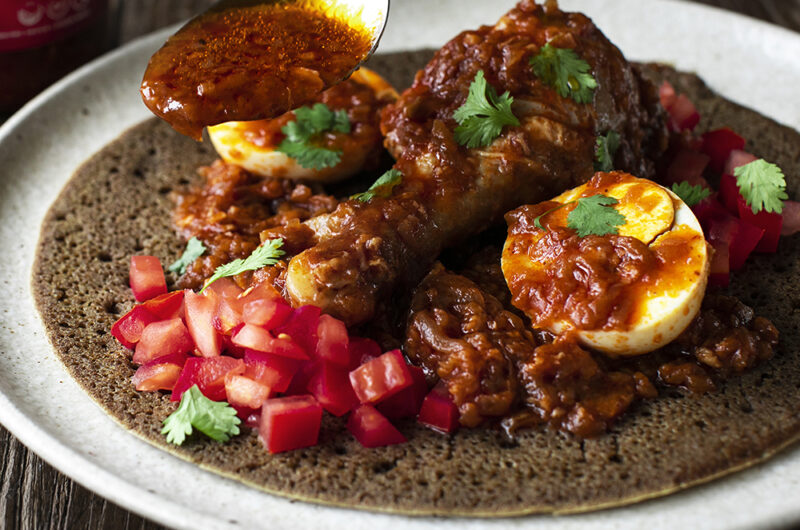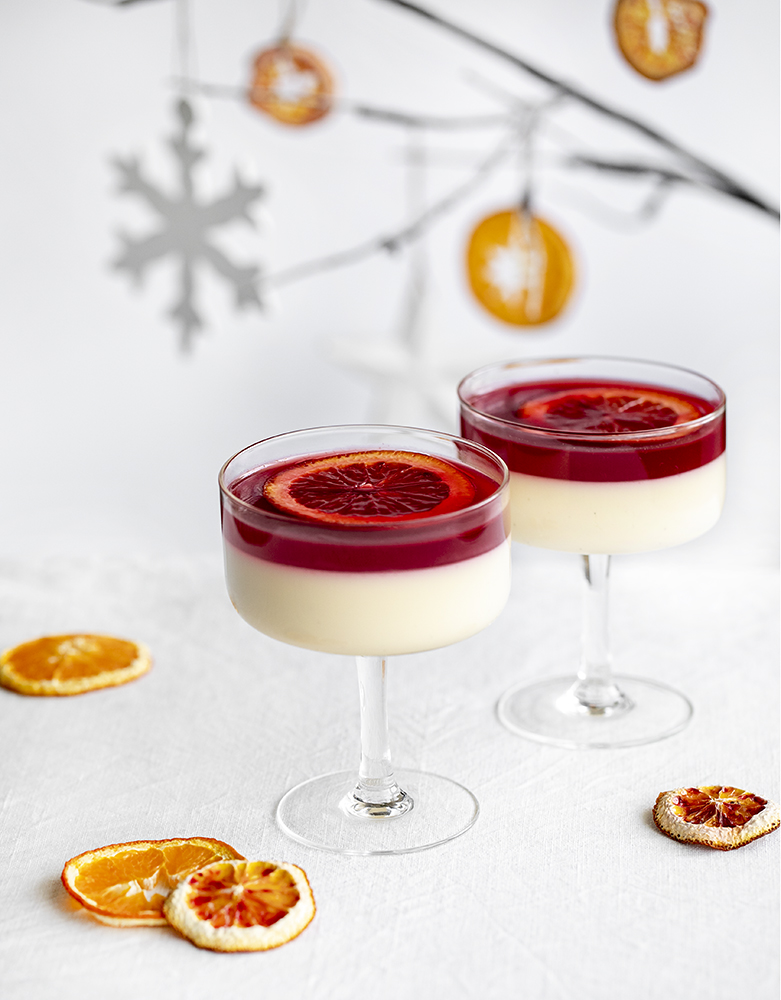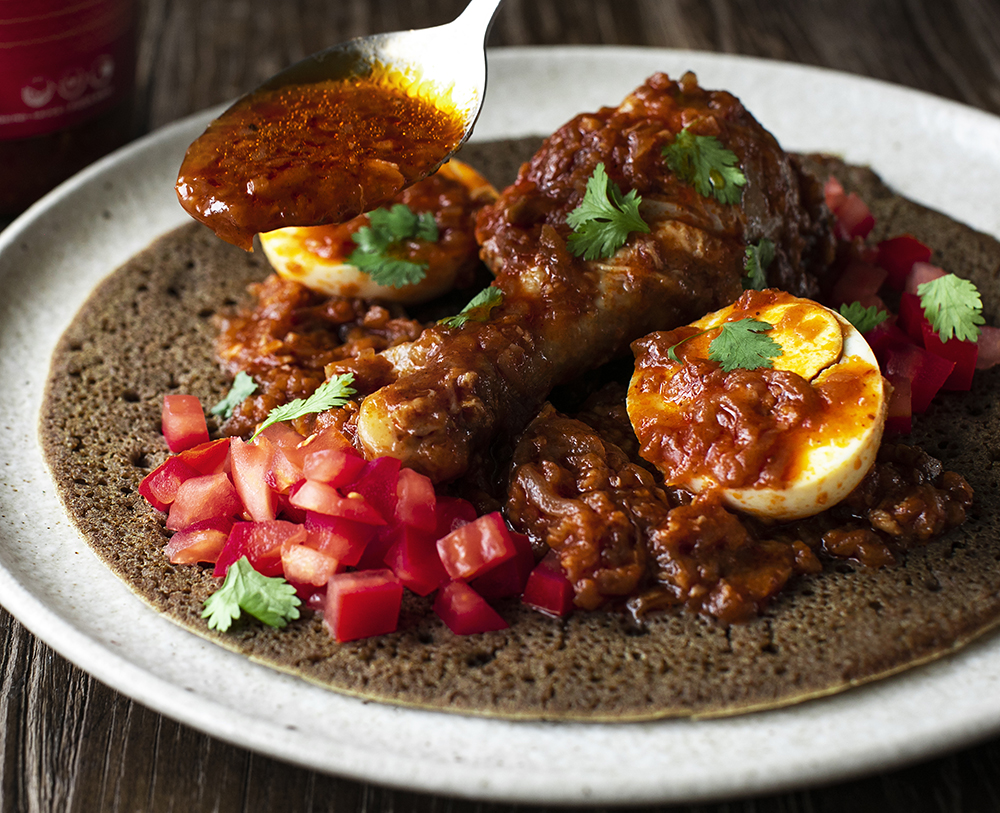
Eating Ethiopian food is an absolutely amazing experience, one that is best shared with friends and family. Tear off a piece of injera, scoop up some flavourful Doro Wat curry, and enjoy! Injera is a large spongy sour crepe, a staple of Ethiopian cuisine, it can be served with any dish and used as utensils. Injera is traditionally made of teff flour and water that is naturally fermented during four days. Fermentation gives to injera its distinctive sour flavour and develops the bubbles that turn out to that amazing spongy texture.
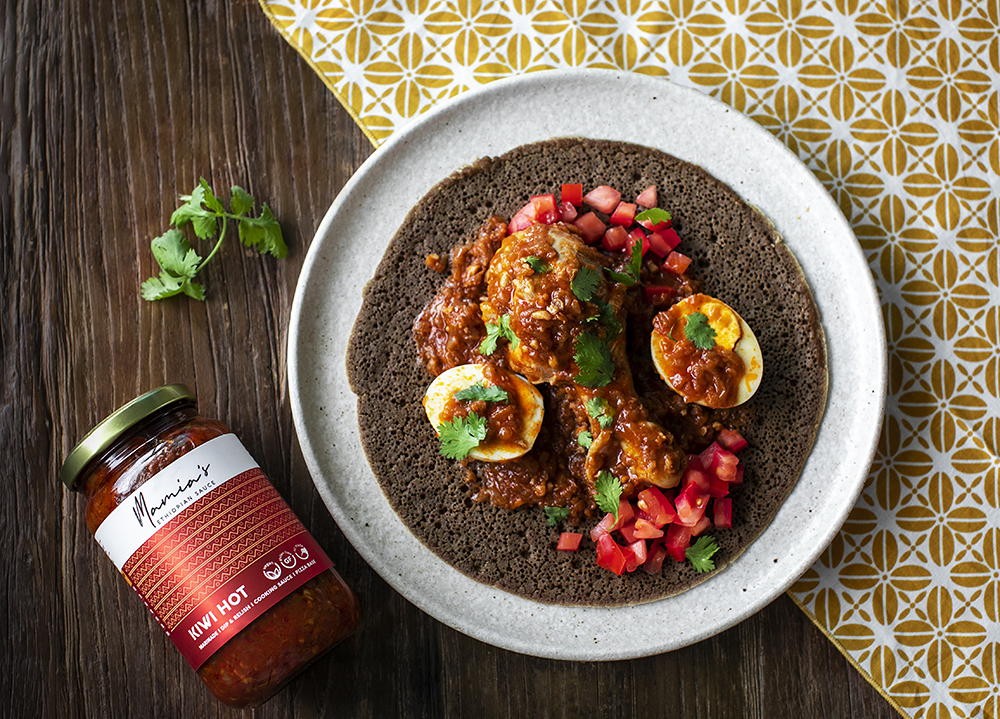
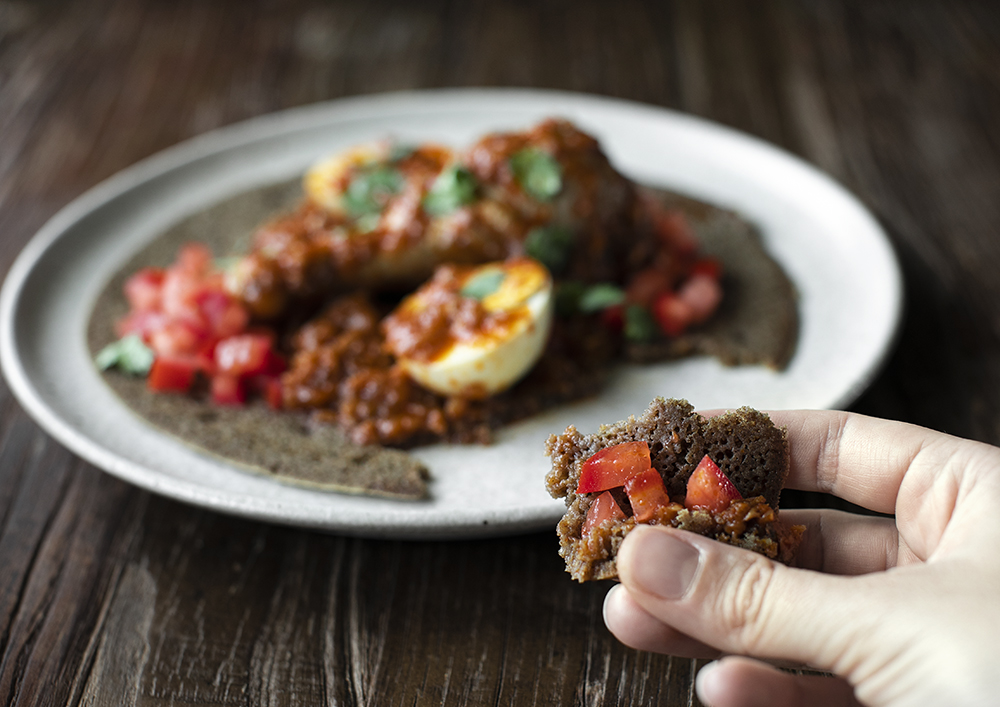
Teff is a fine grain—about the size of a poppy seed—that comes in a variety of colours, from white and red to dark brown. It is an ancient grain from Ethiopia, and comprises the staple grain of Ethiopian cuisine. Teff is naturally gluten-free and rich in iron.
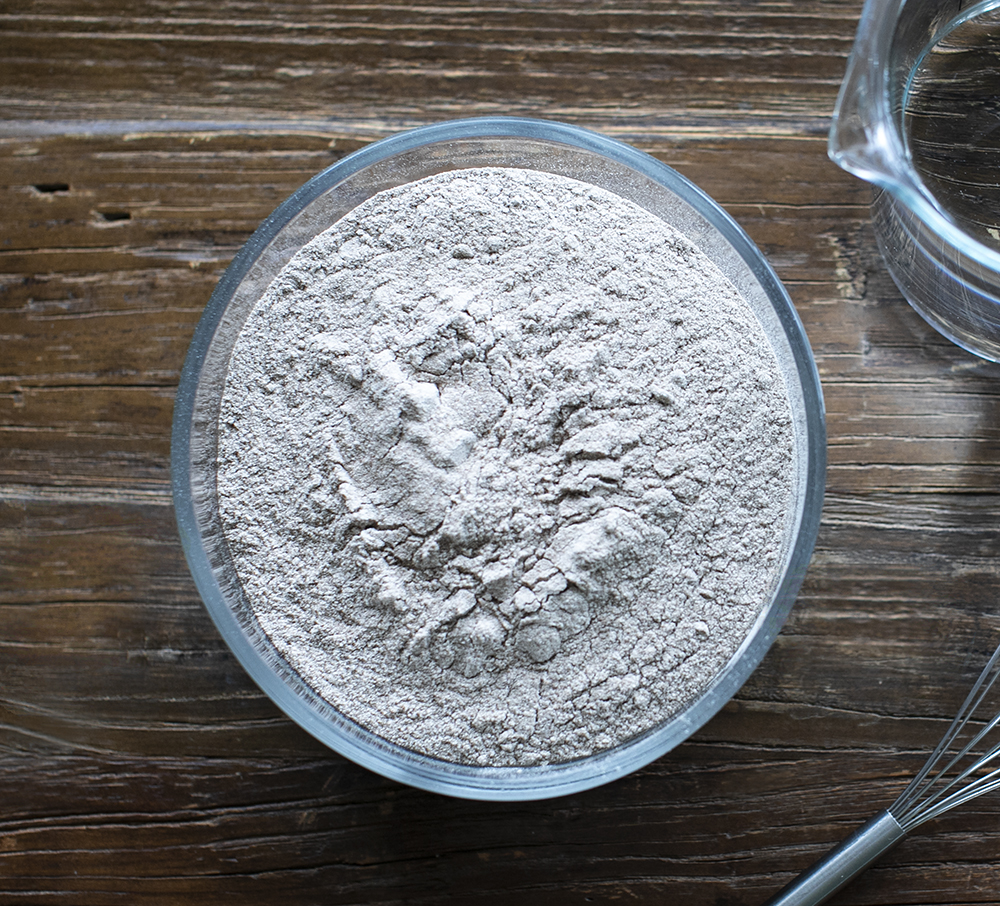
Doro Wat is one of the most popular traditional Ethiopian delicacies. It is basically meat curry. So you can do it with any meat you prefer. Wat means spicy stew or curry. Wat sauce combining a list of ingredients such as onion, garlic, ginger, chilli, Berbere spice mix, and herbs. Berbere, a fragrant red spice blend of everything from sun-dried peppers, cinnamon, cardamon and many more delicious spices, is the key to Wat unique flavour! Luckily we have Mamia’s Wat sauce in New Zealand, just add it to your browned chicken and Voila!
To start the Injera fermentation process is pretty easy, you just need some flour, water and patience. However, if you would like to develop an active and stable starter the process can take more days and even years. Some bakeries pass their sourdough starter from generation to generation. The fermentation process for injera is very close to sourdough bread. The easiest way to get really spongy injera, to add leftover batter from the previous batch. I’ve changed slightly the traditional recipe adding to injera my sourdough starter which is super active during this summer. I’ve also added soft wheat flour, that will make the process of making the injera a bit easier and taste more closer to local preferences. Nowadays there are many recipes of injera that can be found, with adding wheat flour, barley flour, corn starch, yeast and even baking soda. I tried to make my recipe as easy as possible, and I hope you will enjoy it. Below you can find some tips that can help to understand the process better:
Tips:
1.Active sourdough starter is key. The more bubbles in your batter – the more spongy texture of injera you will get.
2. Temperature of the pan is important. If the pan is too hot, the batter will thicken before a spongy texture is formed. However, if the pan is too cold, there will be not enough heat to create the bubbles. I would also recommend doing a test with a little amount of batter (one tablespoon or so).
3. No need to flip injera as you will do when cooking French crepe.
4. After you poured the batter no need to move your pan as you will do with crepe. Pour the batter in a circular pattern until injera batter fills the entire skillet. It’s okay if you miss a few spots, go ahead and drizzle a little extra into the gaps.
5. Make sure the batter is the right consistency. If it’s too thick, it can affect the texture. If it’s too thin, it will be hard to work with.
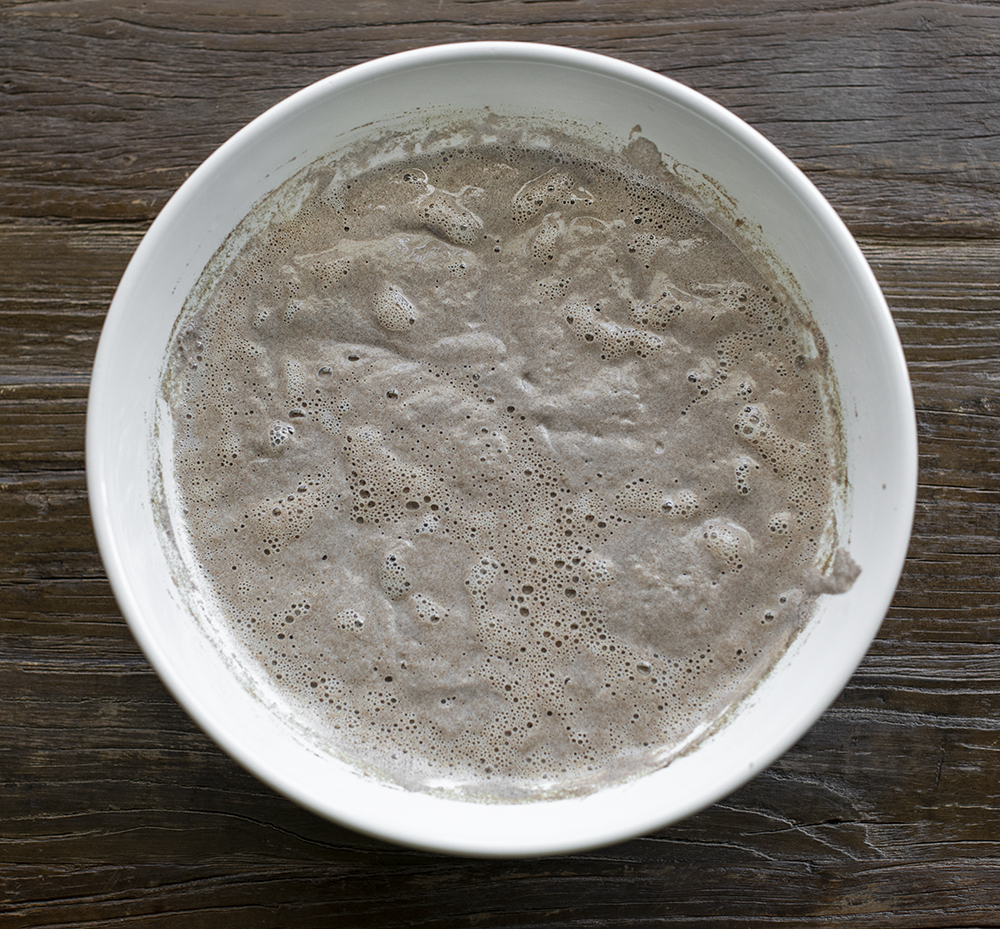
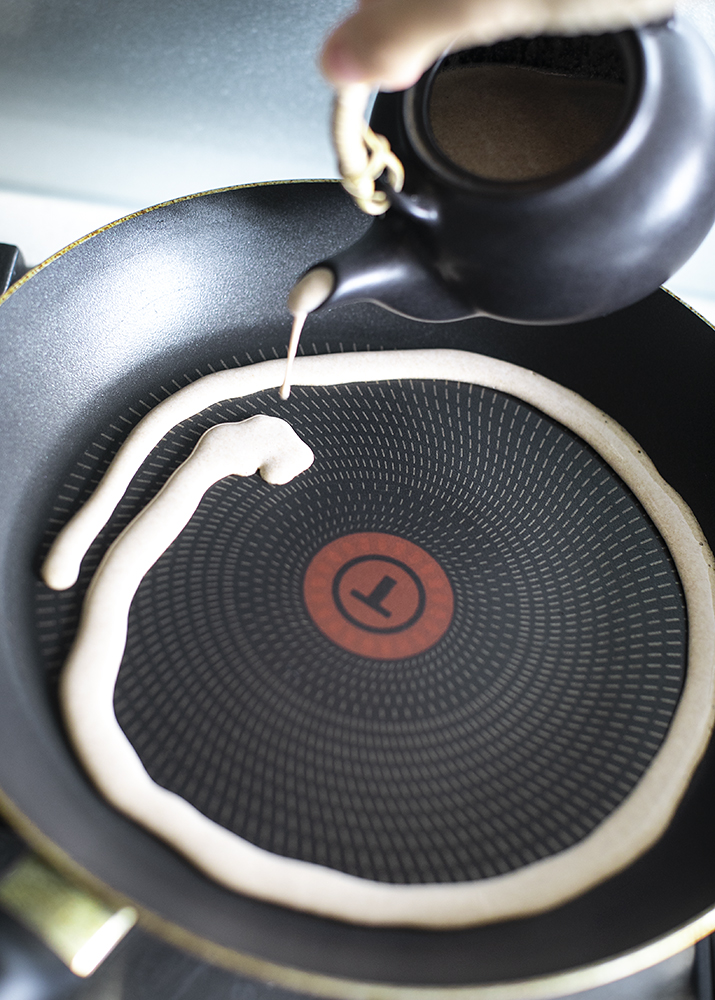
Taste of Ethiopia: Sourdough Injera and Doro Wat
Course: Breadmaking, Fermented Food, Main Course, MeatCuisine: EthiopianDifficulty: Difficult4
servings30
minutes1
hourEating Ethiopian food is an absolutely amazing experience, one that is best shared with friends and family. Tear off a piece of injera, scoop up some flavourful Doro Wat curry, and enjoy!
Ingredients
- For Sourdough Injera
Levain: 50g active sourdough starter
50g teff flour
50g water
- Batter:
levain
1 cup teff flour
1 cup soft flour (or cake flour, or high grade flour)
1 3/4 cups lukewarm water
- For Doro Wat:
1 kg chicken drumsticks
1 jar Mamia’s sauce
500ml chicken stock (or water)
3 hard boiled eggs, peeled and halved
juice of half lemon
cooking oil
salt, pepper
- To serve:
tomato salad
fresh coriander leaves
Directions
- Sourdough Injera. Make sure your sourdough starter is active, take it out of the fridge 2 to 3 days before baking and feed it daily. To check if the starter is ready, drop a small spoonful of the starter in a cup of water, if it floats, it’s ready.
- For levain. In a medium size glass jar, mix sourdough starter and lukewarm water, dissolve the starter into the water. Add the teff flour and mix well. Loosely cover and let it rise overnight.
- For the Injera batter: Next morning. In a large ceramic (non reactive) bowl mix the levain and lukewarm water, dissolve the levain into the water. Add the teff flour and soft flour, mix well. Add more water if needed, the batter should be as thin as crepe batter. Loosely cover and let rise for about 8 hours.
You will see a lot of bubbles on the surface of the batter. The more bubbles – the more spongy texture of injera. Stir injera batter and check consistency again. Add more water, if needed.I would also recommend doing a test. Preheat a large non-stick skillet on a low heat. Add a tablespoon of batter, if you will see a lot of bubbles appearing on the surface, and creating a spongy texture, the batter is ready. - To make injera. Fill a tea pot with a small spout with the injera batter. When the pan is preheated, pour your first injera. Start at the edges of the pan and pour the batter in a circular pattern until injera batter fills the entire skillet. It’s okay if you miss a few spots, go ahead and drizzle a little extra into the gaps. When all injera “eyes” are formed on the surface, cover the pan with a lid tightly and continue to cook with steam until it’s fully cooked inside. Place a paper towel under your lid during the cooking to prevent condensation.
Gently transfer injera to a kitchen towel using a large spatula. Repeat the process with remaining batter.Cool all the injera in a single layer on a large kitchen towel. Do not stack until fully cooled or the injera will stick. - Doro wat. Meanwhile, prepare the Doro Wat curry.
Marinate chicken drumsticks with lemon juice and salt for about 30 minutes. The marinade helps to tenderise the meat.
Pat dry chicken drums using a paper towel. Preheat Dutch oven on a medium high heat. Add one tablespoon of oil and chicken. Brown the chicken on both sides.Add chicken stock (or water) and Mamia’s sauce. Make sure the chicken is fully covered by liquid. Bring to a boil. Close with a lid tightly, bring the heat. Simmer on low heat for 40 minutes until the chicken is fully cooked.
Add boiled eggs and stir to coat completely.
Serve the Doro Wat on top of injera to enjoy it the traditional way. Add tomato salad, sprinkle with fresh coriander leaves. Enjoy!

